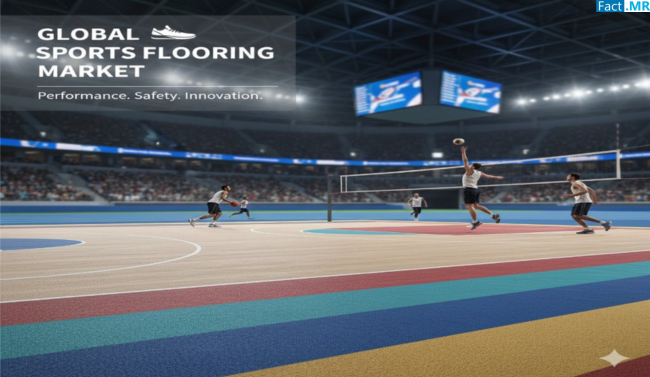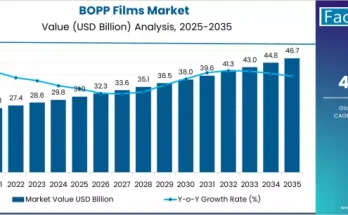Sports flooring is a vital component of athletic environments, designed not only to improve performance but also to ensure safety and durability. Over the past decade, the sports flooring market has evolved rapidly, fueled by increasing investments in sports infrastructure, rising health awareness, and technological advancements in flooring materials. From schools and universities to professional arenas and fitness centers, the demand for specialized sports flooring solutions is growing across the globe.
Market Overview
Sports flooring includes a diverse range of materials such as hardwood, synthetic, rubber, polymer, and modular surfaces. These floors are engineered to support various sports, providing shock absorption, slip resistance, energy return, and ergonomic support. The selection of flooring material is often influenced by factors such as the type of sport, indoor or outdoor application, and compliance with international sporting standards.
In addition to enhancing athletic performance, sports flooring plays a crucial role in injury prevention. Floors with advanced cushioning and anti-slip properties reduce the risk of joint injuries and falls. Furthermore, eco-friendly and recyclable materials are gaining prominence, reflecting the global emphasis on sustainability and environmental consciousness.
Regional Insights
The sports flooring market exhibits significant regional variations based on sports culture, infrastructure investment, and regulatory frameworks.
North America: Institutional sports programs in schools and universities drive the demand for high-quality flooring. Professional leagues in basketball, volleyball, and indoor sports facilities also fuel the adoption of resilient flooring systems.
Europe: Countries like Germany, France, and the UK focus on environmentally friendly, low-emission flooring. Indoor sports such as handball, futsal, and tennis maintain stable demand, with renovations aimed at modernizing facilities.
Asia-Pacific: The region is experiencing rapid growth due to government initiatives promoting sports participation and urbanization. Countries including China, India, and Southeast Asia are investing in both indoor and outdoor sports infrastructure to host international events and enhance recreational programs.
Latin America and Middle East & Africa: Emerging demand stems from youth sports programs and recreational initiatives, though budget constraints can limit the adoption of advanced flooring systems.
Key Trends and Market Drivers
Several factors are driving the expansion of the sports flooring market:
- Health and Fitness Awareness: Increasing focus on health and wellness encourages investments in school gymnasiums, community sports centers, and fitness facilities.
- Technological Advancements: Introduction of cushioned, anti-slip, and hybrid flooring systems improves safety and performance. Modular and AI-integrated solutions are emerging to monitor wear, performance, and maintenance requirements in real time.
- Sustainability: Eco-friendly materials, low-VOC coatings, and recyclable flooring systems are becoming standard, driven by both consumer preference and government regulations.
- Infrastructure Development: Expanding urban populations and government investments in sports infrastructure create demand for indoor and outdoor sports facilities.
- Standardization and Compliance: Governing bodies like FIBA, ITF, and IAAF influence market adoption by requiring certified flooring solutions for official events.
Applications and End-Use Insights
The sports flooring market serves multiple sectors:
- Professional Sports Facilities: Stadiums and arenas require certified flooring systems that meet international standards for performance and safety.
- Educational Institutions: Schools and universities invest in durable, safe, and cost-effective floors for basketball courts, multipurpose halls, and gymnasiums.
- Fitness Centers: Gyms and personal training studios adopt specialized flooring to provide shock absorption and ergonomic support.
- Community and Recreational Centers: Local sports complexes use multifunctional floors suitable for various sports, ensuring durability and minimal maintenance.
- Residential Applications: Growing interest in home gyms and personal sports courts is increasing demand for easy-to-install, modular, and multifunctional flooring solutions.
Challenges and Restraining Factors
Despite its growth potential, the sports flooring market faces several challenges:
- High Initial Cost: Advanced flooring systems, particularly those with shock absorption and slip resistance, often have high installation costs.
- Maintenance Requirements: Wooden and hybrid floors require periodic upkeep to maintain safety and performance standards.
- Climatic Sensitivity: Wooden flooring may be unsuitable in regions with extreme weather or high humidity.
- Regulatory Compliance: Meeting international sporting standards can be challenging for smaller manufacturers.
- Environmental Concerns: Synthetic materials like PVC and rubber face scrutiny, pressuring manufacturers to develop sustainable alternatives.
Market Shifts (2020–2024) and Future Outlook (2025–2035)
The sports flooring market has undergone significant transformations in recent years:
- Regulatory Focus: Increased emphasis on safety standards and athlete protection.
- Technological Innovation: Emergence of hybrid floors, cushioned surfaces, and performance-enhancing flooring systems.
- Industry-Specific Demand: Schools, fitness centers, and municipal sports complexes drive adoption.
- Sustainability Initiatives: Introduction of recyclable and low-emission materials.
- Supply Chain Evolution: Sourcing challenges for synthetic materials and reliance on imports.
Looking ahead to 2025–2035, the market is poised for robust growth, driven by:
- Green Policies: Stricter environmental regulations and circular economy incentives.
- AI and Smart Technology: Integration of AI-powered monitoring systems for maintenance and performance analytics.
- Infrastructure Expansion: Increased construction of sports facilities, smart gyms, and residential courts in emerging markets.
- Sustainability: Full-scale adoption of modular, recyclable flooring systems with low environmental footprints.
- Local Manufacturing: Establishment of regional manufacturing hubs and resilient logistics networks to meet growing demand.
Innovations and Technological Developments
Technological innovation is a key factor shaping the sports flooring market:
- Shock-Absorbing Surfaces: Reduces impact on joints and lowers injury risk for athletes.
- Modular Flooring Systems: Easy to install, repair, and maintain, making them ideal for multipurpose facilities.
- AI-Integrated Monitoring: Enables real-time tracking of floor conditions, optimizing maintenance and performance.
- Eco-Friendly Materials: Development of bio-based polymers, recycled rubber, and low-VOC coatings.
- Hybrid Surfaces: Combines materials such as wood and synthetic polymers for improved playability and durability.
Conclusion
The sports flooring market is evolving into a sophisticated industry, driven by health consciousness, technological advancements, and sustainability initiatives. From professional sports arenas to school gyms and community centers, high-performance, safe, and eco-friendly flooring solutions are increasingly in demand.
As the market continues to expand, manufacturers are investing in AI-enabled monitoring systems, modular designs, and recyclable materials to meet evolving needs. By staying attuned to technological innovations, regulatory standards, and environmental concerns, stakeholders can capitalize on opportunities and contribute to the growth of the sports flooring industry globally.
High-quality sports flooring is no longer just a facility requirement—it is a strategic investment in athlete safety, performance, and long-term infrastructure sustainability.



